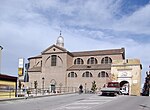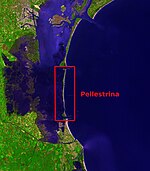Chiesa di San Francesco, Chioggia
17th-century Roman Catholic church buildings in ItalyChioggiaRoman Catholic churches in Veneto

The Chiesa di San Francesco, ("The Church of San Francesco") in Chioggia is a religious building that overlooks on the main square of the city, is a Catholic church located in Chioggia, in the province of Venice, Veneto, Italy. This church is also called San Francesco "old" or "inside the walls" to distinguish it from the other church of San Francesco, the current Civic Museum, located 350 meters further south, beyond the Porta Di Santa Maria, the last remnant of the ancient city walls to the south.
Excerpt from the Wikipedia article Chiesa di San Francesco, Chioggia (License: CC BY-SA 3.0, Authors, Images).Chiesa di San Francesco, Chioggia
Calle Muneghette,
Geographical coordinates (GPS) Address External links Nearby Places Show on map
Geographical coordinates (GPS)
| Latitude | Longitude |
|---|---|
| N 45.218008 ° | E 12.277781 ° |
Address
Chiesa di San Francesco
Calle Muneghette
30015 , Sottomarina
Veneto, Italy
Open on Google Maps











